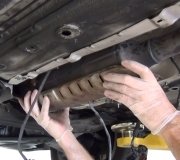Hey everyone, I went to AutoZone to use their code reader and I got code P0420 Catalyst Efficiency Below Threshold (Bank 1). Car is running fine. Now here's where it gets tricky the check engine light that prompted me to get the code in the first place turned on after I started using a Griffin Itrip/charger. In addition to the Check Engine Light, my power locks will also stop functioning after I remove my key from the engine, i.E. I have to manually lock my car every time I go somewhere. Mind you all this began once I started using the itrip. Do you think the p0420 might be tied to it? Or is it all a coincidence?
SPONSORED LINKS
Was this helpful?
Yes
No
Friday, September 25th, 2020 AT 9:43 AM
(Merged)




